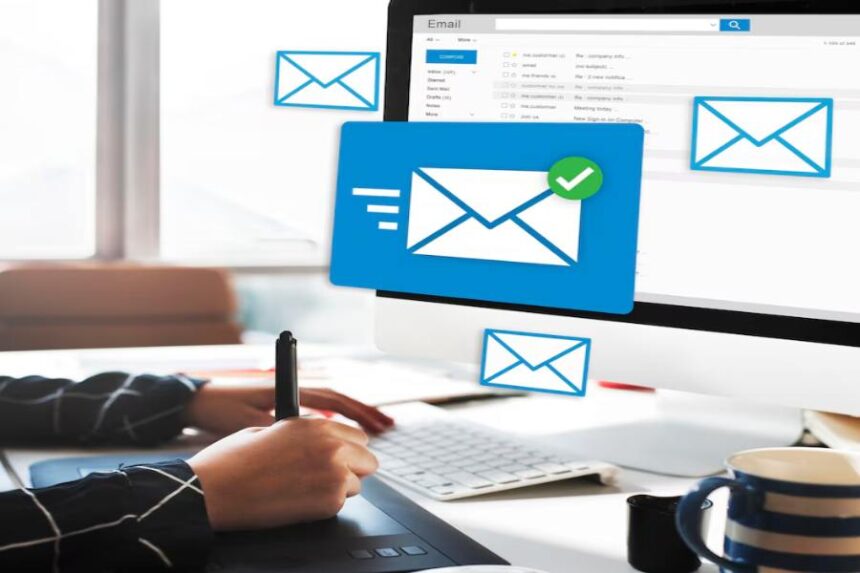Businesses and customers rely heavily on transactional emails as a vital form of communication. These automated messages are sent to confirm orders, notify customers about shipping, help reset passwords, and deliver other relevant transaction information. Transactional emails, when handled well, help build trust, enhance customer service, and raise engagement.
- What Are Transactional Emails and Why Do They Matter
- The Benefits of Transactional Emails
- Supports Customer Service
- Drives Revenue
- Reduces Shopping Cart Abandonment
- Increases Customer Lifetime Value
- Enhances Brand Reputation
- 5 Best Practices for Transactional Email Success
- Personalize Messaging
- Maintain Brand Consistency
- Spotlight Value
- Optimize Mobile Experience
- Include Engagement Triggers
- Optimizing Transactional Email Templates
- Lead with Relevant, Scannable Headers
- Establish Context Early On
- Use Visual Hierarchy Strategically
- Spotlight Actionable Next Steps
- Link Out to Help Articles
- Close with Clear Contact Options
- Conclusion & Next Steps
In this guide you’ll find the key information needed to optimize your transactional email strategy, such as:
- What Are Transactional Emails and Why Do They Matter
- The Benefits of Transactional Emails
- 5 Best Practices for Transactional Email Success
- Optimizing Transactional Email Templates
Learn how to apply the best ways to develop transactional emails that engage customers. Let’s get started!
What Are Transactional Emails and Why Do They Matter
Companies automatically send transactional emails to customers at different stages of a commercial interaction. They supply vital information about an order, confirm shipping, help reset passwords, and manage other transactional activities.
Transactional emails, unlike promotional emails, are sent to supply essential updates related to services. These messages are important to customers because they depend on them to complete transactions, access account features, and track orders.
Common types of transactional emails include:
- Welcome Emails. Sent immediately after a sign-up or account creation.
- Order Confirmation. Details of purchase summaries following a transaction.
- Shipping Confirmation. Notifies when an order has shipped with carrier details.
- Password Reset. Allows customers to generate new login credentials.
- Provides prices paid, payment method, and itemized purchase list.
- Account Update Verifications. Validates changes made to user accounts.
As transactional emails meet customer expectations around facilitating transactions, they present a major opportunity to strengthen trust and loyalty if properly handled.
With open and click-through rates substantially higher than promotional emails, well-designed transactional messages also tend to perform very well at capturing customer attention.
As more businesses shift online, e-commerce and SaaS companies need an effective transactional email service provider to deliver excellent customer experiences.
In summary, transactional emails:
- Provide critical service updates to meet customer needs
- Build trust and strengthen customer relationships
- Capture highest open and engagement rates
- Play a key role in digital businesses
Transactional emails are considered service messages instead of marketing collateral, so it’s easy to see why they matter. Now let’s look at why it is worth investing in these communications.
The Benefits of Transactional Emails
Optimizing your approach to transactional emails offers many substantial benefits:
Supports Customer Service
Transactional emails give a view of order status, tracking shipments, returns and other service problems. This information is invaluable for the customers when questions come up.
Good transactional messaging reduces service inquiries for simple updates so that teams can concentrate on problem-solving on a higher level.
Drives Revenue
More than just transactional, effective transactional emails can also generate revenue.
Strategically placed CTAs for reviews, referrals, repeat purchases, and similar items make transactional messages “work harder”.
Transactional emails also nurture continued shopping activity. Order confirmations or shipping notices arrive when customers are primed to buy again.
Reduces Shopping Cart Abandonment
Abandoned digital shopping carts result in major loss – over $18 billion in sales revenue.
Confirmation emails reduce sticker shock and reassure customers after checkout, lowering purchase anxiety. This builds confidence in buying decisions they’ve made.
Increases Customer Lifetime Value
Customer lifetime value (LTV) measures the total revenue generated from a customer relationship over a period of time.
Building strong trust and keeping your brand prominent in customers’ minds can be achieved through consistent service messaging, effective transactional messaging, and optimizing customer lifetime value.
Enhances Brand Reputation
Every transactional email creates an impression on customers that adds to brand reputation.
Timely, businesslike messages confirm good impressions; messy, lazy emails break trust.
With email being so prominent in customer service, the aggregate effect determines how customers see your business.
Now that the value of producing effective transactional emails is apparent, let’s discuss transactional emails’ best practices for maximizing the output of this essential touchpoint.
5 Best Practices for Transactional Email Success
Here are five proven strategies for getting transactional email right:
Personalize Messaging
Personalized email drives higher open and click rates compared to generic outreach. With each message tailored specifically to the recipient, relevance and engagement increase.
Transactional emails readily lend themselves to personalization with quick access to customer data and order details.
Best practices include:
- Add first names to subject lines and greetings
- Include specifics like order numbers in the copy
- Reference past purchase experiences when appropriate
- Segment customers for unique messages
Avoid including anything that seems automated or batched without context.
Maintain Brand Consistency
While the copy and content of transactional messages are tailored to customer specifics, you should visually tie emails to your brand identity.
Maintaining color schemes, fonts, logos, and other graphical elements used across communications, including your website, ads, and promotions, will strengthen brand recognition.
A quick glance at a transactional email should still make the sender identifiable through a cohesive transactional email design.
Spotlight Value
Since transactional emails inform customers rather than make direct sales pitches, look for organic ways to convey value.
Use good service and support in your communications, avoid direct promotions which can erode long-term perceived worth.
For instance, order confirmations can be used to promote fast fulfillment times, easy returns, or other differentiators. This quietly highlights why customers prefer you without hard sells.
Optimize Mobile Experience
As email is moving to small screens, messages need to be able to smoothly transition between devices.
Begin by having responsive design automatically adjust and reflow email layouts according to the size of the screen.
Then, confirm the customer experience in mobile apps such as Gmail and Apple Mail that show emails differently.
Finally, prominently display action-oriented copy and ensure you don’t have small text and complex graphics on mobile. This assumes a lower engagement time.
Include Engagement Triggers
Although transactional emails are all about vital information, subtle calls to action can add to their effectiveness.
Confirmation messages are, for example, an ideal opening to ask for reviews. This feedback records new purchase impressions.
Other possible triggers include requests for referrals, linking to related products, or driving reorders of consumables.
The key is matching engagers with context. Shipping notices, for instance, won’t spark the same response as confirmation of a digital purchase.
Test different options and avoid anything too salesy or unrelated.
Optimizing Transactional Email Templates
Strategies discussed, let’s talk transactional email best practices in structuring transactional email templates for maximum effectiveness.
Lead with Relevant, Scannable Headers
Readers make up their minds about emails in seconds. Clear and descriptive headers present relevance at first glance.
Shout what the email has to say right in the title with lots of white space: “Your Order is Confirmed” or “Reset Your Password”.
Establish Context Early On
Quickly answer “who, what, when, and where” surrounding the transaction so customers understand why the message is arriving and what actions or updates have occurred.
If context is still ambiguous, customers may disconnect or, even worse, report emails as spam due to confusion.
Use Visual Hierarchy Strategically
Divide text into scannable sections using headers, bullets, and add whitespace to make reading easier.
Also, use font sizes, color, and other visual styling to guide attention to the most important details.
For instance, use larger or bold type to highlight order numbers, deadlines, or next-step instructions.
Spotlight Actionable Next Steps
Calls to action can boost engagement, but they need proper positioning. Keep them visually distinct and place them after key transaction details, so they drive behavior without upfront distraction.
For example, order confirmation emails should first display order summaries before prompting for reviews or referrals. Support easy scanning for values.
Link Out to Help Articles
Email real estate is limited, but additional assistance may be welcomed by readers. However, avoid overloading customers with FAQs right in emails.
Instead, prominently link to external help articles and support pages to address more profound questions. This provides self-serve access without bloating your messages.
Close with Clear Contact Options
Even perfectly crafted emails hit snags or spark inquiries outside the scope. Make support channels clear by closing with contact details.
Common elements are links to chat services, help portals, social networks, and other means for fast, helpful support.
Conclusion & Next Steps
When transactional messages are accurate and delivered on time, your relationship with customers can be enhanced, the level of your service can be elevated, and more income will be generated. However, bad implementation can lead to damage to brand reputation and loyalty.
Careful execution of the strategies in and around personalization, branding, engagement triggers, and email design will ensure your business gets transactional messaging right.
If your existing solutions are plagued by poor deliverability, lack of customization, or reporting requirements, look at specialized transactional email service providers that will help simplify scalability and enhance delivery.
By investing in getting transactional communications right, companies gain a competitive advantage because of better customer experiences. Such investment has returns in vital metrics such as lifetime value, retention, and growth.
To build effective transactional email capabilities:
☑️ Audit current email performance
☑️ Define an ideal customer journey
☑️ Assess capabilities needed
☑️ Research best-fit platforms
☑️ Strategically design templates
With the approach explained, what are the first measures you will implement to raise the standard of your transactional messaging? Look for opportunities that will quickly generate improvement as you continue to refine your transactional messaging. Make sure your customers receive the best service and experience possible, and pursue engagement possibilities at each step of their buying process.




